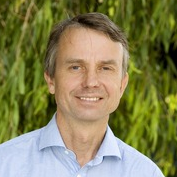Mechanical and Hydrological Processes in Cappings and Covers of Landfills and Mine Waste
A special issue of Geosciences (ISSN 2076-3263). This special issue belongs to the section "Hydrogeology".
Deadline for manuscript submissions: closed (20 August 2018) | Viewed by 8774
Special Issue Editor
Interests: rehabilitation; soil structure; soil hydrology; geomechanics; water balance; soil-plant-atmosphere interaction
Special Issues, Collections and Topics in MDPI journals
Special Issue Information
Dear Colleagues,
Encapsulation of municipal and other waste from mining is common practice to prevent or minimise environmental harm otherwise caused by this waste. The primary intention of cappings and covers is to control water and/or gas flow. Their implementation has economic benefits and often provides a meaningful solution. The concept of capping is used across climatic zones however different climatic conditions require designs adopted to environmental conditions, which among other factors are dominated by the abundance or lack of moisture, suitability of substrates and biological activity. Within a regulatory framework, cappings have to fulfil certain functional criteria and are often individually defined by the type of waste to be managed and the legislatory framework in which the capping is constructed.
Although the use of cappings and covers to control environmental impact can be very successful, there are still many failed examples . One of the main causes for failure is the neglect of the temporal aspect and the fact that mechanical and hydrological properties may change over time with e.g. repeated dry and wet phases, consequence of frost or biological activity. Other challenges are the quantification of the water balance in landforms with high heterogeneity of properties or the limited age of cappings, which make predicting the trajectory of change difficult.
The objective of this special issue is to reveal hydrological and/or geomechanical processes that may lead to a change of properties to the improvement or detriment of the cover, whether in function or capacity. Submissions are invited, which identify and reveal causes and consequences of geomechanical and hydrological processes, but also attempt to find solutions and improve our understanding of the applicability of cappings and covers for waste.
Assoc. Prof. Thomas BaumgartlGuest Editor
Manuscript Submission Information
Manuscripts should be submitted online at www.mdpi.com by registering and logging in to this website. Once you are registered, click here to go to the submission form. Manuscripts can be submitted until the deadline. All submissions that pass pre-check are peer-reviewed. Accepted papers will be published continuously in the journal (as soon as accepted) and will be listed together on the special issue website. Research articles, review articles as well as short communications are invited. For planned papers, a title and short abstract (about 100 words) can be sent to the Editorial Office for announcement on this website.
Submitted manuscripts should not have been published previously, nor be under consideration for publication elsewhere (except conference proceedings papers). All manuscripts are thoroughly refereed through a single-blind peer-review process. A guide for authors and other relevant information for submission of manuscripts is available on the Instructions for Authors page. Geosciences is an international peer-reviewed open access monthly journal published by MDPI.
Please visit the Instructions for Authors page before submitting a manuscript. The Article Processing Charge (APC) for publication in this open access journal is 1800 CHF (Swiss Francs). Submitted papers should be well formatted and use good English. Authors may use MDPI's English editing service prior to publication or during author revisions.
Keywords
- Geomechanics
- Water flow
- Preferential flow
- Unsaturated flow
- Gas flow
- Heterogeneity
- Stability
- Sustainability





